Integration services are a critical part of most organisations, and with that comes an ever-growing number of APIs built and managed by different teams, platforms, and business units. One problem that consistently comes up is API discoverability. When a team wants to deliver a new integration, the first question is often whether something similar already exists. Without a clear answer, people waste time asking around or rebuilding what is already out there.
The issue is not limited to duplication. Lack of visibility leads to delays, misalignment, and inconsistent implementation of standards. Product owners and developers spend cycles trying to locate what should be obvious. Architects struggle to apply governance when there is no shared view of existing APIs. The more complex the environment, such as hybrid cloud or multiple gateways, the harder this becomes.
There is also a governance challenge. When APIs are scattered or undocumented, it becomes difficult to apply consistent standards or support reuse across teams. Governance only works when people can see what they are governing, and when foundational practices like ownership, documentation, and versioning are clearly defined and followed.
This is where a central API catalogue can make a difference. In the Azure ecosystem, Azure API Center is designed to address these problems. It does not replace your API gateway or fix poor internal API design processes, but when built on good foundations, it helps improve discoverability, governance, and integration agility across the organisation. This is why it is worth considering for organisations aiming to improve integration agility at scale.
What is Azure API Center?
The Azure API Center helps organisations bring structure, visibility, and consistency to their API landscape. It acts as a central place to register, catalogue, and discover APIs, regardless of where they are hosted or how they are exposed. While it doesn’t handle runtime traffic like an API gateway, it solves upstream problems around visibility, governance, and reuse by providing a unified view of all APIs across the organisation.
Before diving into features, it’s worth emphasising that API Center’s value depends heavily on how well it’s implemented and maintained.
The Foundation of API Center
API Center is only as useful as the information it holds. For it to drive real outcomes, a few foundational practices need to be in place:
- Clear API ownership: Every API should have an assigned team or individual responsible for its lifecycle, metadata, and documentation.
- Consistent metadata standards: Fields like domain, version, lifecycle status, and contact details should be uniformly applied.
- Reliable documentation: Links to specs, usage examples, or developer portals should be current and accessible.
- Agreed governance processes: Teams should follow a shared model for registering and maintaining APIs.
Discoverability Through a Unified Catalogue
One of the key problems Azure API Center solves is helping teams find what already exists before building something new. It does this by acting as a single, searchable catalogue of APIs across the organisation, regardless of where those APIs are hosted.
APIs in API Center can be tagged with structured metadata such as domain, environment, lifecycle stage, and owning team. This allows users to filter by practical criteria. For example, a user can look for production-ready finance APIs that are owned by the data platform team. Each API entry includes links to documentation, version history, and ownership details. This helps teams assess relevance quickly and reduces the need for meetings just to get basic context.
The experience of discovery is delivered through a few key interfaces:
- The Azure Portal, where API Center is managed like any other Azure resource.
- The API Center Portal (currently in preview), which offers a more focused UI for browsing, filtering, and inspecting APIs.
- The Visual Studio Code extension, which brings API discovery directly into the developer’s workflow. Developers can search APIs, view metadata, and open API specs without leaving their IDE.
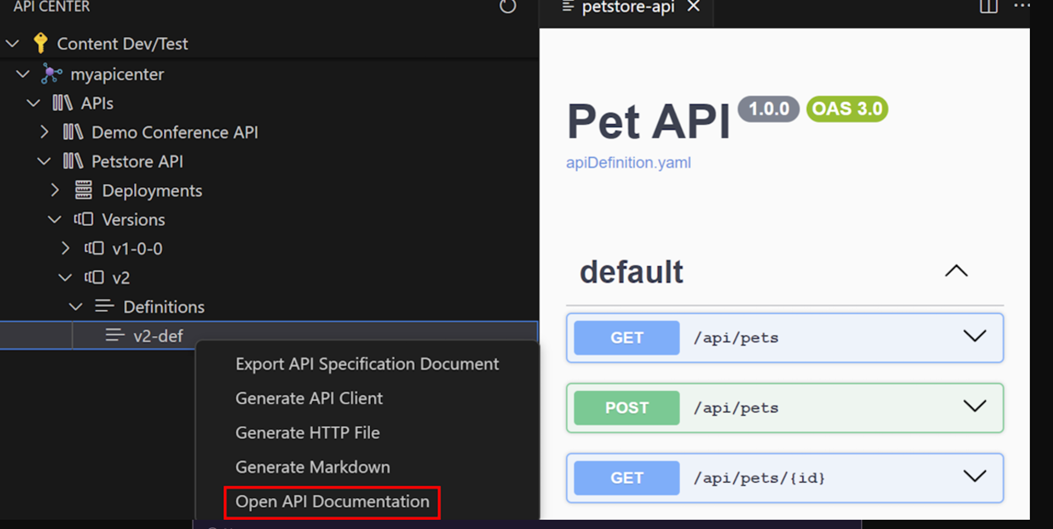
Figure 1 – Discover APIs through VS Code Extension Tool (source: https://learn.microsoft.com/en-us/azure/api-center/discover-apis-vscode-extension#view-api-documentation)
Context Through Metadata and Documentation Links
Finding an API is only the first step. The next challenge is understanding what it does, whether it is still in use, and how to consume it. Azure API Center addresses this by allowing each API entry to be enriched with metadata and links that provide the necessary context up front.
You can assign structured metadata to each API version, including:
- Lifecycle status (for example, production, preview, deprecated)
- Owning team or contact person
- Business domain and environment
- System of record or source application
- Tags for classification, such as internal, partner, or public
This information helps users quickly understand the purpose, status, and scope of the API. For example, if an API is marked as deprecated, teams know to avoid it. If it is marked as production and maintained by a specific team, they know who to contact or where to raise questions.
API Center also supports linking to external documentation. This includes OpenAPI specs, developer portals, Postman collections, or internal knowledge base articles. Providing direct access to this information removes the guesswork. Consumers can validate request and response formats, authentication models and example payloads without needing to dig through other systems or contact multiple teams.
When metadata and documentation are used properly, API Center does more than just list APIs. It gives teams enough clarity to evaluate them without needing to chase down information or schedule a call. This speeds up decision-making and lets people focus on how they will use the API, rather than figuring out what it actually does.
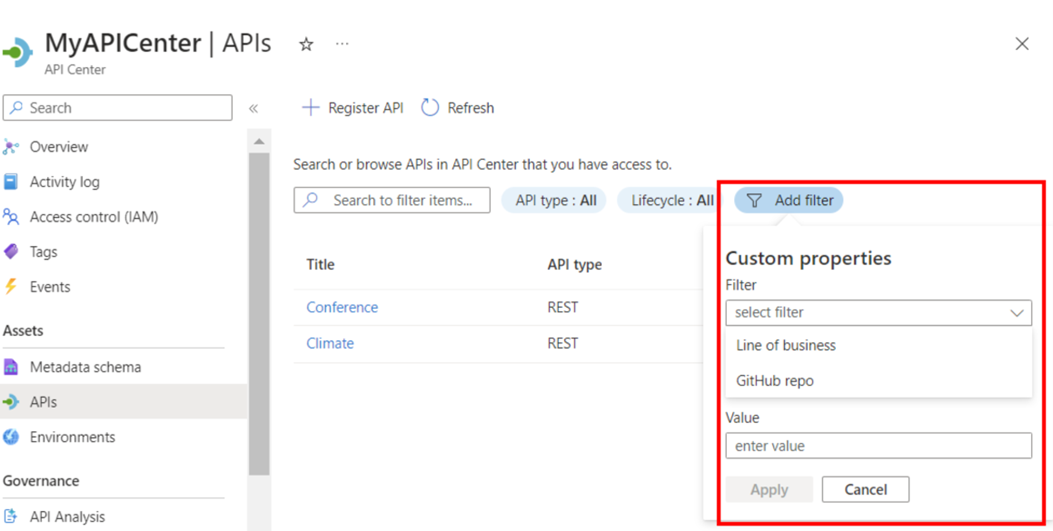
Figure 2 – Use metadata for governance (source: https://learn.microsoft.com/en-us/azure/api-center/metadata#use-metadata-for-governance)
Governance Support Through Standardisation
Standardisation is a core part of API governance, and Azure API Center supports it not just through metadata enforcement, but also by allowing you to validate API design directly through automated API analysis.
This analysis can be configured in two ways:
- Microsoft-managed analysis is built-in and requires no setup. It automatically applies a set of predefined rules based on Microsoft’s recommended API design guidelines. These rules cover common issues such as inconsistent naming, missing operation summaries, untyped responses, and invalid status codes.
- Self-managed analysis allows you to bring your own rule set using tools like , a widely used open-source API linter. You define your custom rules in a Spectral ruleset file, a widely used open-source API linter. You define your custom rules in a Spectral ruleset file, host it in a publicly accessible location, and configure your API Center project to reference it. Once configured, API Center will automatically run your Spectral rules against registered OpenAPI specs and surface any issues directly in the portal.
When an OpenAPI specification is registered or updated in API Center, the selected rule set is applied automatically. The analysis results are shown in the portal, making it easy for developers and platform teams to identify and fix issues early.
This approach makes governance tangible. Instead of relying on documents and checklists, you define standards as code and apply them consistently. It reduces the need for manual reviews, improves design quality, and helps scale governance across teams.
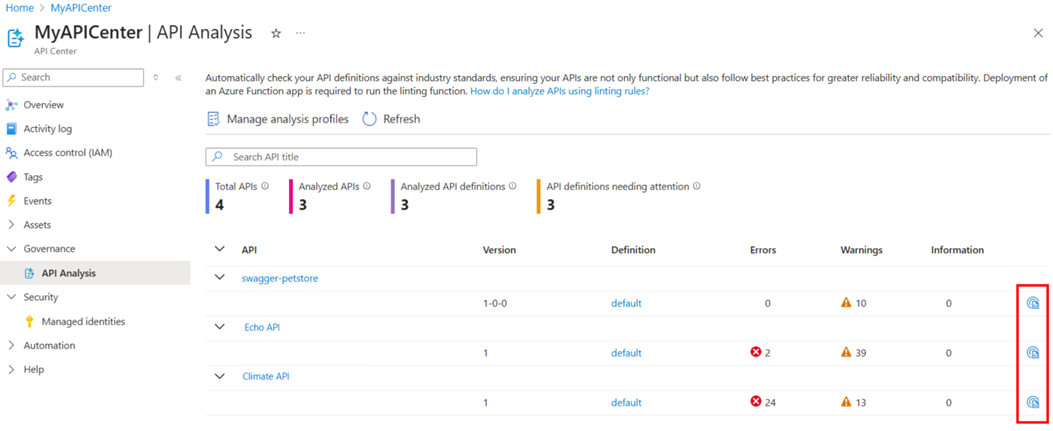
Figure 3 – API Analysis Report Summary (source: https://learn.microsoft.com/en-us/azure/api-center/enable-api-analysis-linting?tabs=portal#api-analysis-summary)
Compatibility Across Platforms and Environments
Most organisations operate in mixed environments where APIs are distributed across multiple platforms. These may include Azure API Management, AWS API Gateway, on-premises systems, legacy services, and integration platforms like MuleSoft. This fragmentation makes it hard to get a full picture of the API landscape, let alone apply consistent governance.
Azure API Center is designed to be gateway-agnostic. You can register APIs regardless of where they are hosted, as long as you can supply the necessary metadata and, ideally, an OpenAPI specification. This allows you to include APIs from both modern cloud platforms and older systems that expose REST endpoints directly.
Support for registering APIs from platforms outside of Azure, such as MuleSoft, is still evolving. At the moment, this typically involves manually importing the API definition or automating it through CI/CD pipelines. Native integration with third-party providers is not yet fully available but is part of Microsoft’s roadmap for API Center.
This gives teams the flexibility to keep using the platforms that make sense for their workloads, without sacrificing visibility. API Center focuses on surfacing what exists, not forcing everything into a single runtime model. That makes it easier to build shared awareness across teams, even when the underlying tech stack remains diverse.
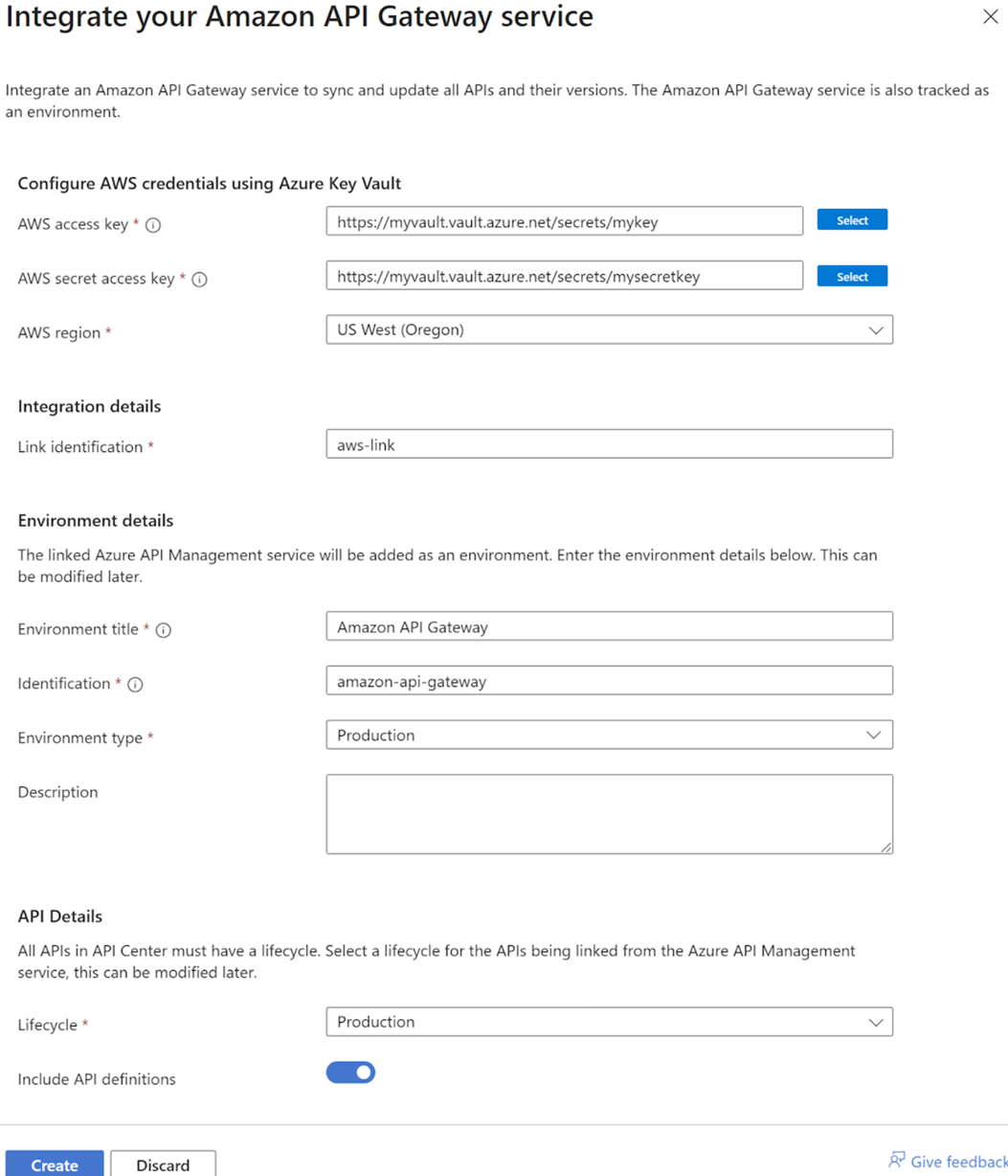
Figure 4 – Synchronise APIs from Amazon API Gateway (source: https://learn.microsoft.com/en-us/azure/api-center/synchronize-aws-gateway-apis?tabs=portal)
Automation and Integration into Delivery Workflows
A central API catalogue is only valuable if it reflects what actually exists in your environment. If registration is manual or treated as an afterthought, it often falls out of sync. Azure API Center addresses this by supporting automation that fits naturally into existing delivery workflows.
You can register and update APIs using:
- ARM templates or Bicep, for infrastructure-as-code integration
- The Azure CLI, for scripting or DevOps pipelines
- The REST API, for full programmatic control over projects, APIs and versions
This allows teams to automate tasks like registering new API versions during deployment, updating lifecycle states post-release, and linking to documentation directly from the CI/CD process. It removes manual effort and ensures the catalogue stays current without additional overhead.
API Center also supports automatic synchronisation with both Azure API Management (GA) and Amazon API Gateway (Preview). This allows APIs from these platforms to be automatically discovered and registered in API Center, further reducing friction and improving catalogue accuracy across environments.
With this level of automation, it’s a good time to revisit your API lifecycle process. Registering APIs in API Center shouldn’t be treated as a one-off task. Instead, it becomes part of a broader workflow that includes versioning, publishing, deprecation and ownership tracking. Automating these steps pushes teams to formalise their approach, reinforce metadata standards and treat APIs as long-lived, managed products rather than isolated deliverables.
When automation is combined with well-defined processes, API Center becomes more than a static registry. It becomes a reliable source of truth that reflects the state of your APIs and the standards you want teams to follow.
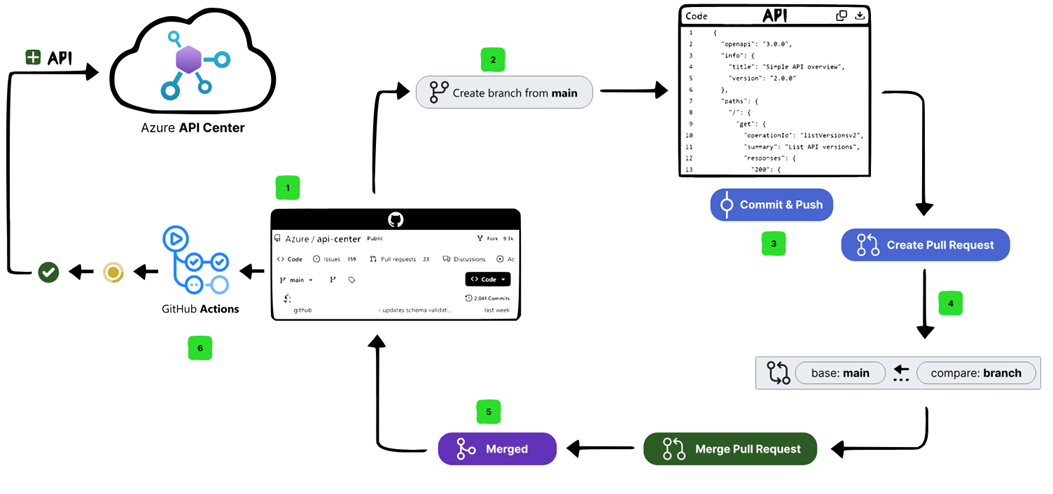
Figure 5 – Register APIs in your API Center using GitHub Actions (source: https://learn.microsoft.com/en-us/azure/api-center/synchronize-aws-gateway-apis?tabs=portal)
Alignment with Azure-native Governance and Identity
Azure API Center is a native Azure resource and integrates directly with the platform’s governance and identity framework. That alignment is particularly important in environments where multiple teams contribute to or consume APIs, and where tightly controlled access is essential.
Access is managed using Azure Role-Based Access Control (RBAC), with built-in roles that support a range of responsibilities:
- Azure API Center Service Reader: Read-only access to the API Center resource. Ideal for product or consumer teams that need visibility without modification rights.
- Azure API Center Data Reader: Grants access to read API metadata and details at the data plane level.
- Azure API Center Service Contributor: Full access to create and manage API Center projects, APIs and versions.
- Azure API Center Compliance Manager: Allows management of compliance rule sets and analysis configurations.
Custom roles can also be created to support more specific access needs. For example, a team might be permitted to register new APIs but not delete existing ones, or be limited to APIs tagged with a specific domain. This provides tighter control without blocking legitimate usage. And for those who enjoy crafting deeply specific access models, custom roles offer the flexibility to go as granular as needed.
Access can be scoped at the subscription, resource group, or project level, depending on how your organisation is structured. That flexibility makes it easier to give integration, platform, product, and architecture teams access to what they need, while keeping permissions appropriately aligned to their roles.

Figure 6 – In-built roles for Azure API Center (source: https://learn.microsoft.com/en-us/azure/role-based-access-control/built-in-roles?toc=%2Fazure%2Fapi-center%2Ftoc.json&bc=%2Fazure%2Fapi-center%2Fbreadcrumb%2Ftoc.json#integration)
Honourable Mention: Support for Model Context Protocol (MCP) Server
Azure API Center now supports the ability to register and discover Model Context Protocol (MCP) servers, a new integration point that helps surface APIs and tools exposed to AI agents or external systems. MCP is an emerging open protocol that allows external models to access services like APIs and knowledge bases in a structured, discoverable way.
In practical terms, this means you can now register MCP servers within your API Center project, classifying them by environment, endpoint, and other metadata. Each MCP server includes basic metadata and a lightweight OpenAPI definition that represents the APIs or capabilities it exposes. These entries are treated similarly to traditional APIs, making them part of the central catalogue available to internal teams or platform tooling.
From an integration perspective, this can be useful where AI agents or external platforms are being introduced into workflows and need to interact with existing services. For example, a vendor-hosted MCP server exposing a data enrichment API could be registered and tracked alongside internal services, helping platform and integration teams manage visibility, ownership, and lifecycle in one place.
Microsoft continues its effort to support more modern integration patterns and as with other parts of API Center, the benefit comes from applying clear metadata, ownership, and governance practices to make it part of a well-managed API portfolio.
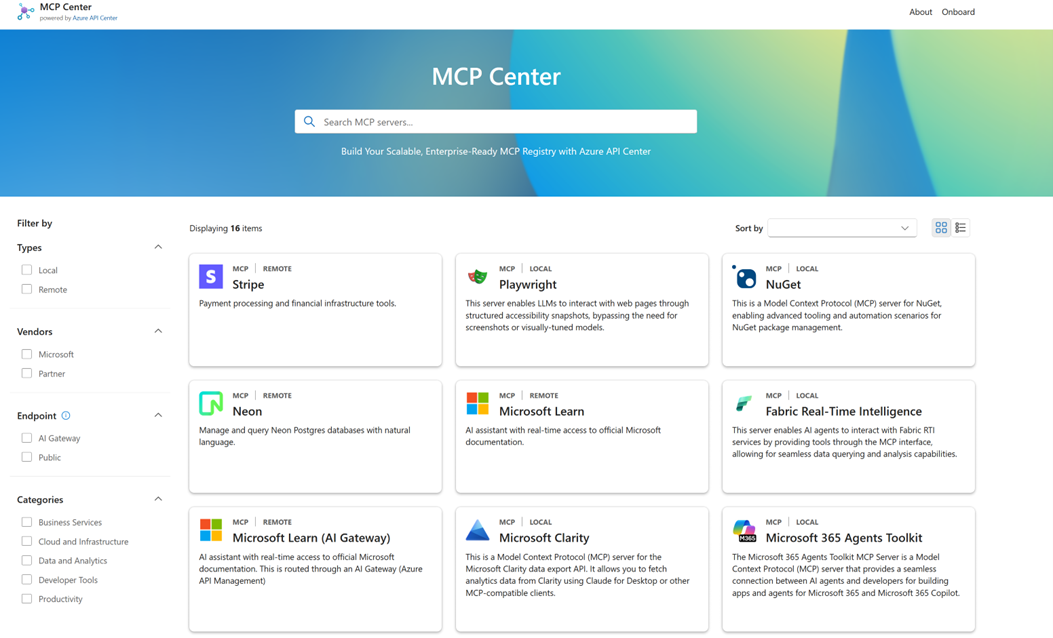
Figure 7 – MS Example MCP Center (Powered by Azure API Center) source: https://mcp.azure.com
Conclusion
Azure API Center is shaping up to be a useful addition for organisations aiming to improve API discoverability and governance in a way that aligns with existing Azure practices. It integrates well with native platform features, supports flexible access control, and encourages better API lifecycle and design standards when backed by strong foundations.
Microsoft continues to actively develop the platform, with a healthy roadmap that includes expanded provider support and further automation capabilities.
While the post presents the experience as smooth and well-structured, that may not always reflect reality. There are areas where the platform can improve. However, those considerations are better suited for a separate discussion, as this overview has already covered a lot of ground.



















